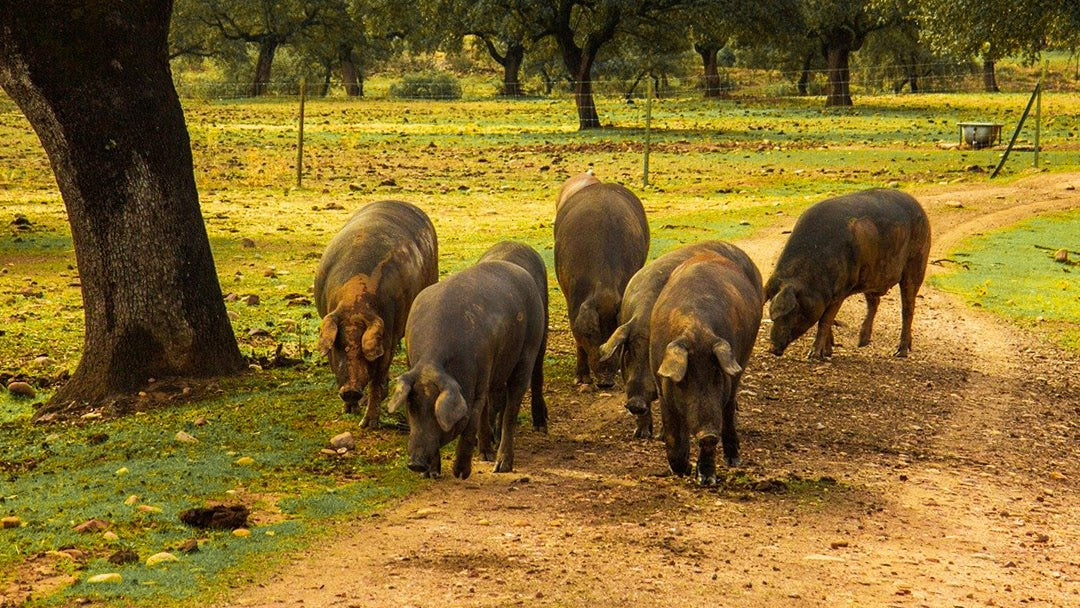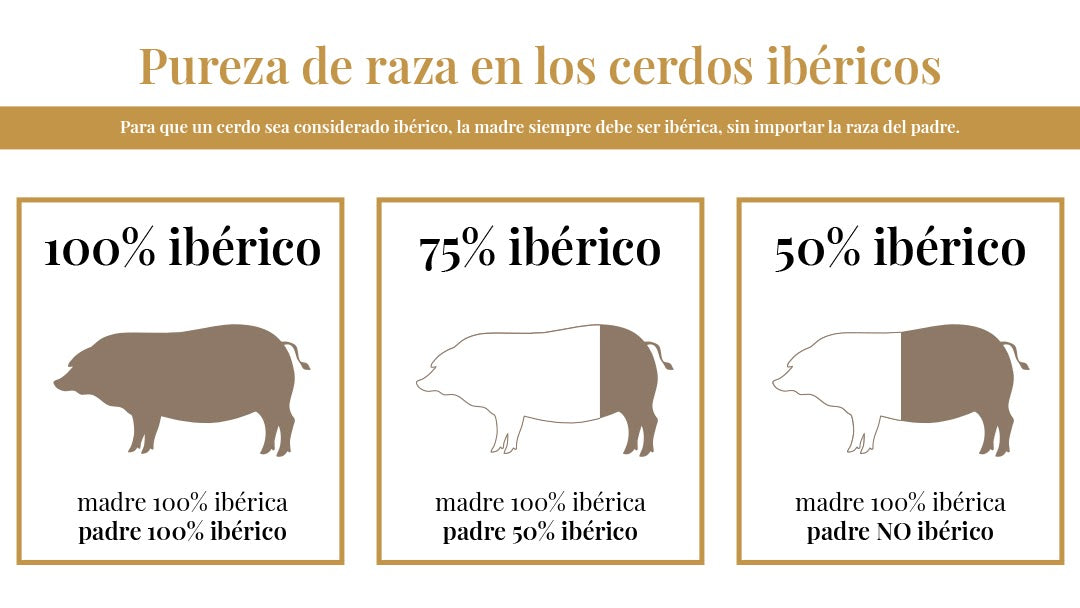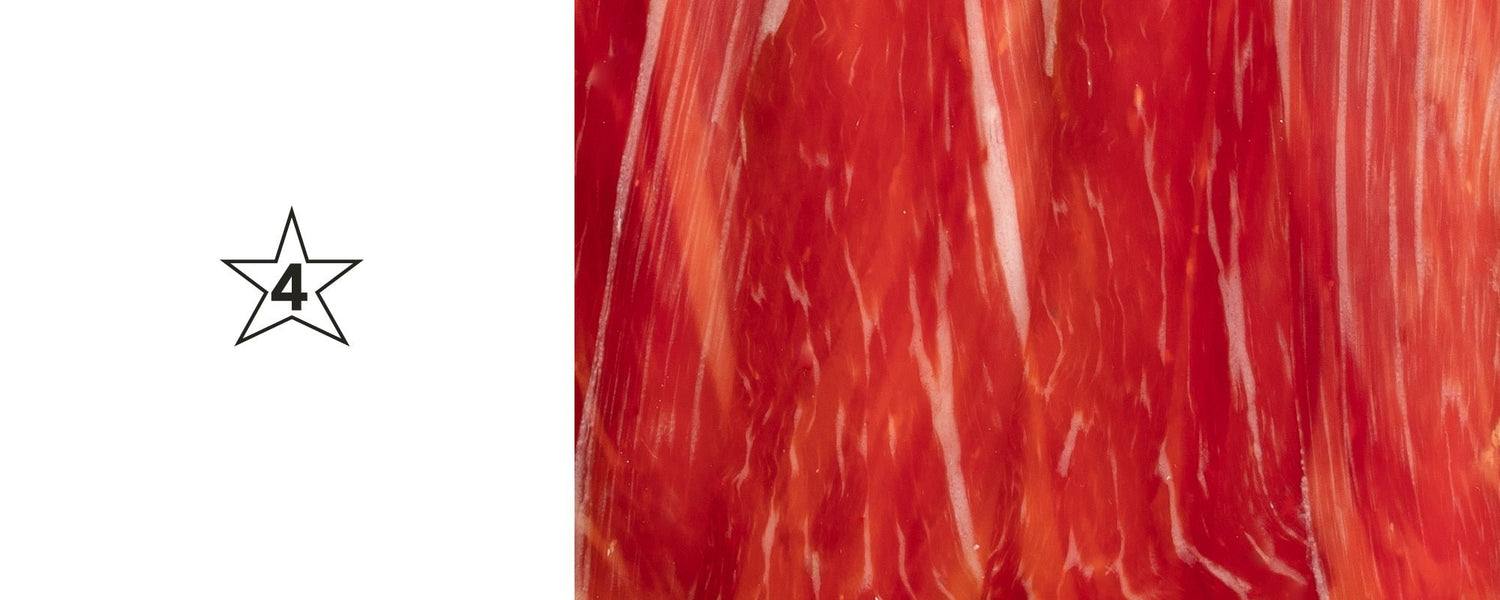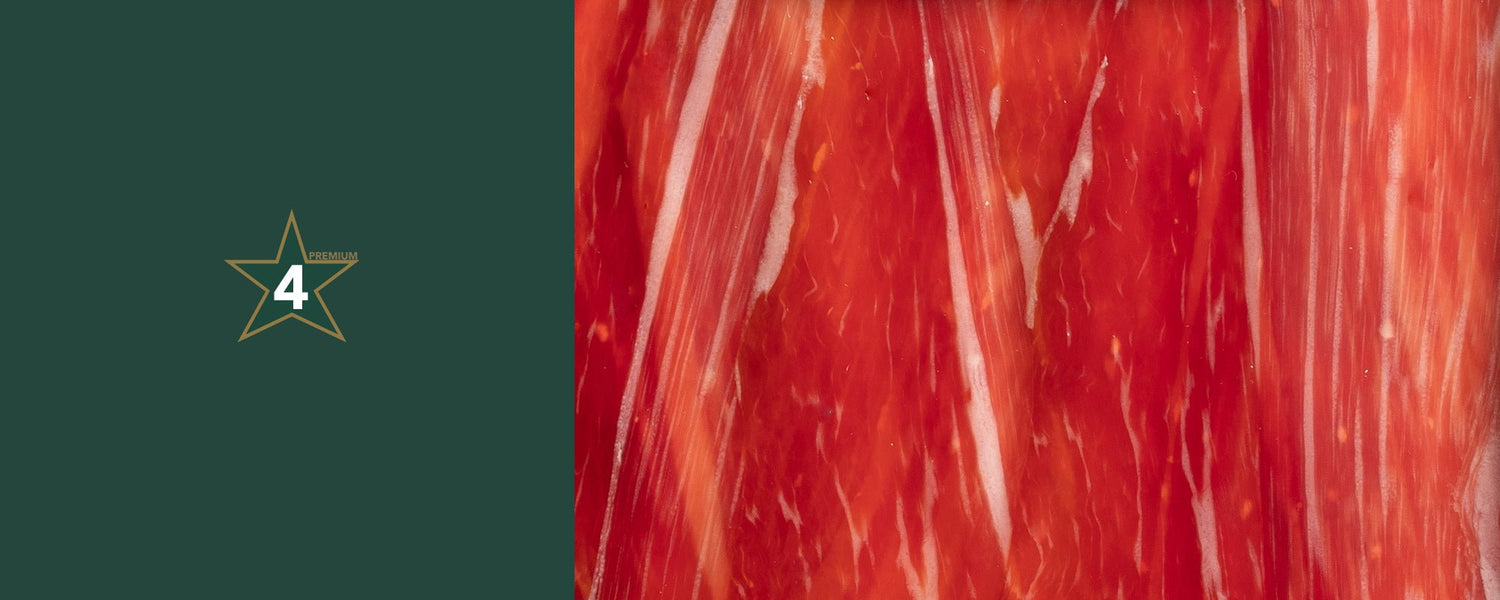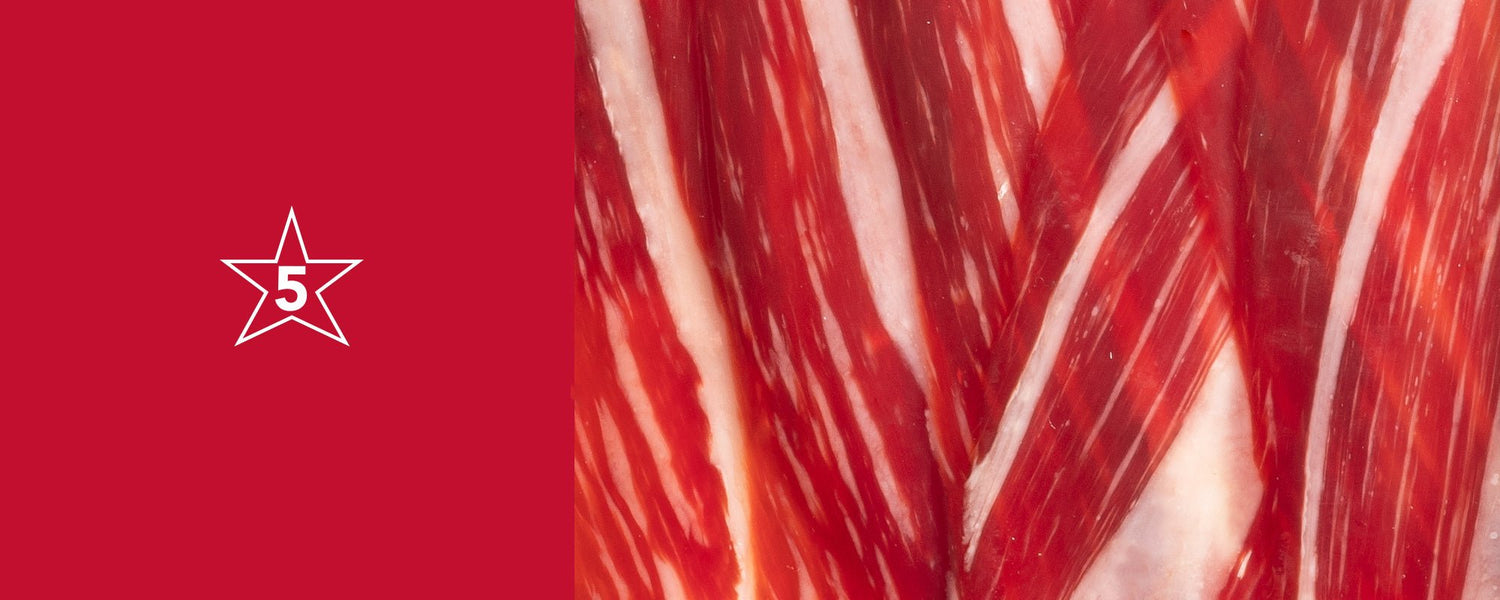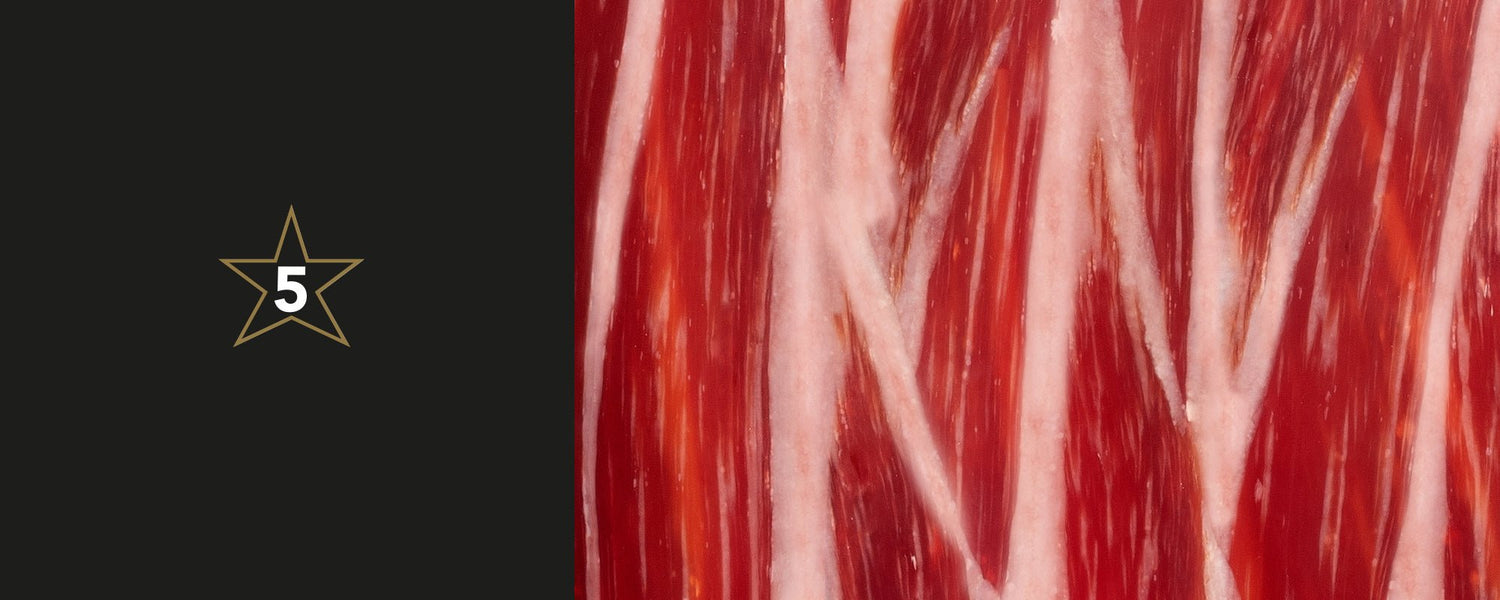El cerdo ibérico es una especie única con características genéticas que lo diferencian del resto de animales de la misma especie. Son predominantes en la Península Ibérica, compartida entre España y Portugal, y son animales muy apreciados en el sector gastronómico ya que gracias a ellos se produce el famoso jamón ibérico y distintos tipos de embutidos ibéricos.
Una de las particularidades que lo hacen tan especial es la capacidad de infiltrar grasa en el músculo, esto es el principal motivo por el cual el jamón ibérico presenta ese sabor exquisito, llegando a dar la sensación de deshacerse en la boca.
Los rasgos físicos del cerdo ibérico
El cerdo ibérico es animal de raza porcina, el nombre también se aplica a las variedades pertenecientes a lo que se conoce como “tronco ibérico” en las que se incluyen razas negras y coloradas, lampiñas o con pelo.
Físicamente hablando, estos animales presentan una cabeza bien proporcionada y un hocico puntiagudo, a diferencia de otro tipo de cerdos, el ibérico tiene un cuello potente, la papada caída, las orejas de tamaño mediano en forma de visera y un amplio vientre. Sus extremidades, las que más nos interesan a la hora de hablar de jamón, son finas y proporcionadas.
La Península Ibérica como lugar único de procedencia del cerdo ibérico
Los cerdos ibéricos, como lo indica su nombre, pertenecen a una raza autóctona de la Península Ibérica ubicada entre España y Portugal, donde existen dos agrupaciones de razas de las que hablamos a continuación:
- Cerdo Celta (prácticamente extinguido)
- Cerdo Ibérico
- Ibérico de capa negra, que incluye las variedades Lampiño y Entrepelado.
- Ibérico de capa colorada, que incluye las variedades Retinta o Colorada, Rubia de Cádiz, Manchada de Jabugo y Torbiscal.
La variedad más utilizada en el mundo del jamón es la Retinta o Colorada que, además de ser muy prolífica, permite un mayor rendimiento de las piezas de jamón.
Lo que diferencia el cerdo ibérico del resto
Lo más relevante que debes saber es que el cerdo ibérico es un animal de raza autóctona y que su capacidad fisiológica de almacenar grasa entre los músculos le hace tener un alto valor gastronómico. Los cerdos ibéricos son los únicos cerdos del mundo de los que se puede obtener jamón ibérico, un producto con aroma, sabor y textura muy particular, saludable y nutritivo.
Según la legislación que regula la producción de jamón ibérico, en la denominación de “cerdo ibérico” se incluyen todos aquellos cerdos cuya madre es 100% ibérica y está inscrita en el libro genealógico de la Raza Porcina Ibérica. Las crías de este cerdo, y por tanto los productos producidos a partir de ellas, pueden tener diferentes porcentajes de pureza: 50%, 75% o 100%. Vean la siguiente infografía.
En la producción de jamón ibérico no solo es importante la raza (que es fundamental), sino también el proceso de cría del animal donde interviene el lugar donde vive y su dieta.
Los parajes donde los cerdos ibéricos viven en libertad se denominan“dehesas”y corresponden a unas hectáreas de terreno donde se dan las condiciones favorables para que el cerdo viva en libertad durante los meses de otoño e invierno. Las dehesas se sitúan en Extremadura, Salamanca y Andalucía, donde se encuentra la bellota, el fruto del cual se alimentan los cerdos ibéricos y da lugar al famoso “jamón ibérico de bellota”.
El cerdo ibérico (ya sea 100% o 50% ibérico de raza) hace “la montanera”, es decir, que vive en libertad en la dehesa durante el otoño y el invierno alimentándose a base de bellotas. Éstas son las que poseen un aceite exquisito que el cerdo infiltra en músculo convirtiéndolo en grasa muy preciada.
Los jamones que provienen del cerdo ibérico
Los productos que podemos obtener de cerdos ibéricos siempre deberán indicar el porcentaje de pureza de raza del cerdo y cuando se trate de jamones y paletas, estos deberán estar identificados con las bridas de color según su alimentación. Aquí os dejamos un resumen de los diferentes jamones que podéis encontrar según el % de raza ibérica y la alimentación recibida.
- Jamón de bellota 100% ibérico:
Conocido popularmente como “el pata negra”. Este jamón proviene del cerdo de padre y madre 100% ibéricos. Además, hace la montanera, es decir, vive en libertad en la dehesa durante el otoño y el invierno alimentándose de bellotas. Una vez se sacrifica el animal, la pata de jamón se conserva en sal durante entre treinta y seis y cuarenta y ocho meses, según el peso de cada pieza. - Jamón de bellota 50% ibérico:
Lo único que lo diferencia del jamón 100% ibérico es la raza. En este caso, el cerdo puede ser 50% ibérico lo que quiere decir que la madre es 100% ibérica, pero se ha cruzado con un cerdo de otra especie como puede ser el Duroc. - Jamón de cebo de campo 50% ibérico:
En este caso sí que varía la alimentación y el modo de vida del cerdo ibérico. Su raza es de 50% o 75% ibérica, aun así, no hace la montanera si no que combina granja y libertad. Así se alimenta de pienso y cereales, pero también de frutos silvestres, hierbas etc. cuando salen a pasturar. Esta dieta combinada hace que su jamón sea de más calidad que un ibérico alimentado en granja 100%. - Jamón de cebo 50% ibérico:
este caso es un jamón que procede de un cerdo de raza ibérica pero que ha sido totalmente criado en granja y alimentado exclusivamente con pienso en edad adulta.
En definitiva, el cerdo ibérico es un animal exclusivo de la Península Ibérica que nos proporciona un producto estrella como el jamón ibérico. Este producto se ha convertido en un reclamo mundial en el mundo de la gastronomía y en un símbolo de nuestro país.
FAQs
¿QUÉ DIFERENCIA HAY ENTRE UN CERDO BLANCO Y UN CERDO IBÉRICO?
El cerdo ibérico corresponde a una especie con características genéticas que lo diferencian del resto de animales de la misma especie. Son predominantes en la Península Ibérica, compartida entre España y Portugal, y son animales muy apreciados en el sector gastronómico ya que gracias a ellos se produce el famoso jamón ibérico. Estos cerdos tienen la capacidad de infiltrar grasa en el músculo y eso los hace realmente únicos. El cerdo blanco, en cambio, se puede encontrar en todo el mundo y da lugar a otro tipo de jamón como el popularmente conocido como jamón serrano.
¿POR QUÉ EL CERDO IBÉRICO SOLO SE ENCUENTRA EN LA PENÍNSULA IBÉRICA?
Porque existen parajes donde se dan las condiciones climatológicas ideales para que este tipo de cerdo viva y desarrolle todas sus capacidades.
¿QUÉ TIPO DE JAMONES PROVIENEN DEL CERDO IBÉRICO?
El jamón ibérico de bellota 100%, el jamón ibérico de bellota 50%, el jamón ibérico de campo y el jamón de cebo 50% ibérico.
¿QUÉ TIPO DE JAMONES PROVIENEN DEL CERDO BLANCO?
El jamón que proviene del cerdo blanco es el popularmente conocido como jamón serrano en España.


